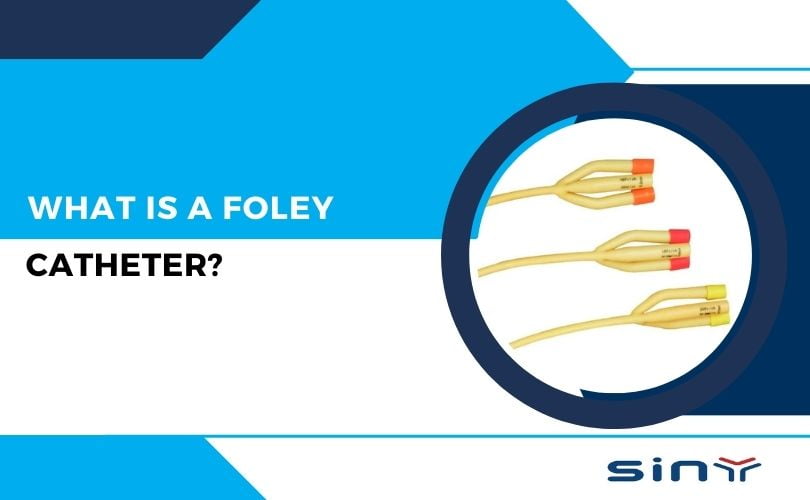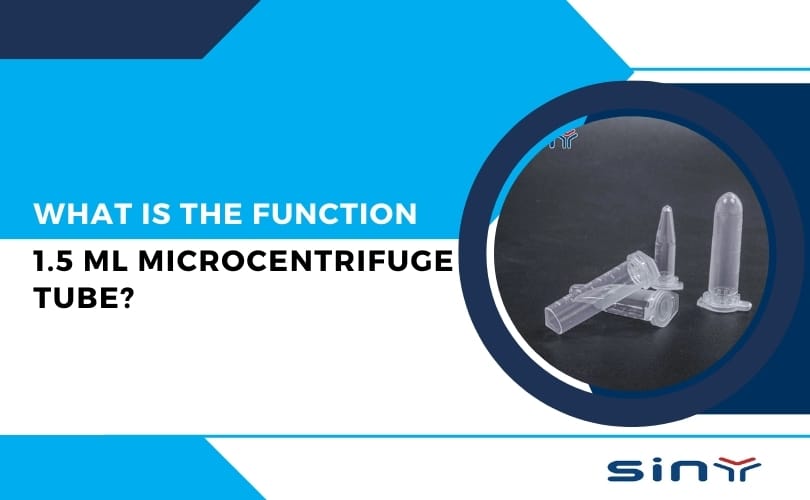The Foley catheter is a thin, sterile tube that drains urine from the bladder. An indwelling catheter can remain in place for some time. The catheter is held in place by a balloon filled with sterile water at the end, which prevents the catheter from being removed from the bladder. Catheter tubes drain urine into bags, which are emptied when full. Catheterization is the process of inserting a catheter.
Table of Contents
- 1 What is a Foley Catheter?
- 2 Foley catheter is a medical device, mainly used in the following situations
- 3 Usage method
- 4 What are the materials of the catheter?
- 5 What are the models of catheters?
- 6 The following matters need to be noted when using a urinary catheter
- 7 Types of Foley Catheters
- 8 Conclusion
- 9 FAQs
What is a Foley Catheter?
A Foley catheter, often called a urinary catheter, is a flexible tube inserted into the bladder to drain urine. This medical device is crucial in modern healthcare, especially for patients who cannot urinate naturally due to medical conditions, surgeries, or other health complications. Hospitals, long-term care facilities, and home care settings widely use Foley catheters to manage urinary function and ensure patient comfort and safety

Foley catheter is a medical device, mainly used in the following situations
Structural composition
The catheter comprises a tube body, a connector, and an air bag (some catheters have one). The tube body typically consists of soft medical materials, such as silicone or latex, to minimize irritation to human tissue. The connector links the tube to collection devices like drainage bags.
Main functions
Draining urine
For patients with dysuria caused by various reasons, such as prostate hyperplasia leading to urinary retention, neurogenic bladder dysfunction, etc., the catheter can drain urine from the bladder, reduce bladder pressure, and avoid kidney damage.
In some surgeries, a catheter will be inserted in advance to prevent intraoperative damage to the bladder and facilitate observation of urine volume. When the patient cannot urinate independently due to anaesthesia or physical weakness after surgery, the catheter can continue to play the role of draining urine.
Bladder irrigation
For patients with bladder diseases, such as cystitis or bladder tumors, healthcare providers inject flushing fluid into the bladder through a catheter to irrigate the bladder. This process removes blood clots, bacteria, and necrotic tissue, reduces inflammation, and prevents the spread of infection.
Usage method
The catheter insertion is usually performed by professional medical staff under strict aseptic operation conditions. Before insertion, the medical staff will select the appropriate type of catheter according to the patient’s condition and disinfect the patient’s perineum. When inserting, the movement should be gentle to avoid damaging the urethra. After insertion, the catheter should be appropriately fixed to prevent it from falling off, and a collection device, such as a drainage bag, should be connected.
What are the materials of the catheter?
The materials of the catheter are mainly the following:
Natural rubber
Features: It has a certain degree of elasticity and softness, and the price is relatively cheap.
However, it has poor tissue compatibility with the human body, is prone to allergic reactions, and is prone to aging.
Applicable situations: It may be used in some economically backward areas or in emergency situations.
Latex
Features: soft texture, relatively easy to insert, less irritation to the urethra.
However, latex catheters may also cause allergic reactions, especially for patients allergic to latex.
Applicable situations: Widely used in various medical institutions, but it is necessary to confirm whether the patient is allergic to latex before use.
Silicone
Features: The tissue compatibility is excellent, the stimulation to the urethral mucosa is minimal, and it is not easy to cause allergic reactions.
The surface of the silicone catheter is smooth, it is not easy to form scale, and it is convenient for care and long-term use. It has good durability and is not accessible for aging.
Applicable situations: It is suitable for patients who need long-term indwelling catheters, such as critically ill patients, paralyzed patients, etc.
Polyvinyl chloride (PVC)
Features: The material is more complex, and the price is cheaper.
However, the stimulation to the urethra is relatively large, which can easily cause urethral damage and infection.
Applicable situations: Generally used for short-term catheterization or limited economic conditions.
What are the models of catheters?
The models of catheters are mainly distinguished by their diameters and different functional characteristics. There are mainly the following types:

Classification by diameter
Children’s type
Generally, the diameter is thinner, usually around 6Fr – 10Fr. Suitable for infants and children, whose urethra is relatively narrow and requires a thinner catheter to reduce damage to the urethra.
Adult type
Common ones are 14Fr – 22Fr. Male patients generally choose relatively thick catheters, such as 16Fr – 20Fr; female patients can choose slightly thinner catheters according to specific circumstances, such as 14Fr – 18Fr. However, factors such as the patient’s and urethral conditions must also be considered when selecting particular models.
Classification by function
Ordinary catheter
This is the most common type, mainly used for short-term urine drainage, and the model selection is more flexible, depending on the specific situation of the patient.
Double-lumen catheter
There are two cavities, one for drainage of urine, and the other for injecting saline or air into the balloon to fix the catheter in the bladder to prevent slippage. The model is usually similar to that of an ordinary urinary catheter.
Triple-lumen urinary catheter
It has three lumens. In addition to the channels for draining urine and fixing the balloon, there is also a channel specifically for bladder irrigation. It is suitable for patients who need bladder irrigation, such as bladder bleeding, cystitis, etc. The model selection also needs to consider the specific situation of the patient.
The following matters need to be noted when using a urinary catheter
Before insertion
Assess the patient: Understand the patient’s condition, urethral condition, allergy history, etc., and choose a suitable type of urinary catheter. Patients who are allergic to latex should use a non-latex urinary catheter.
Explanation and communication: Explain the purpose, process and precautions of catheterization to the patient and his family to reduce the patient’s tension and fear.
Environmental preparation: Ensure that the operating environment is clean, quiet, and private, and the temperature is appropriate to provide comfortable patient conditions.
During insertion
Strict aseptic operation: Medical staff must strictly abide by the principles of aseptic operation, wash hands, wear masks and hats, and use sterile gloves and instruments to prevent infection.
Gentle movements: When inserting a urinary catheter, the movements should be gentle to avoid excessive force to damage the urethral mucosa. For male patients, special attention should be paid to the physiological curvature of the urethra, and the catheter should be inserted slowly.
Correct judgment: After inserting the catheter, confirm whether the catheter is in the bladder. You can judge this by observing if urine flows out and if there is smooth backflow after injecting a small amount of saline.
After insertion
Proper fixation: Correct the catheter to avoid pulling, twisting, and pressure. You can use a particular catheter fixation patch or belt to fix the catheter to the patient’s inner thigh or abdomen.
Keep drainage unobstructed: Check whether the catheter is unobstructed frequently to avoid folding and blockage. If the drainage is not smooth, promptly identify and treat the cause by flushing the catheter or adjusting the patient’s position.
Observe urine: Closely observe urine’s colour, volume, and properties. If there is any abnormality, notify the doctor as soon as possible. For example, turbid urine, hematuria, odour, etc., may indicate urinary tract infection, bladder bleeding and other problems.
Prevent infection: Clean the urethral opening and wash the skin around the urethral opening with warm water every day to avoid contamination.
Regularly replace the catheter and drainage bag. Replace the catheter once a week and change the drainage bag daily.
Encourage patients to drink more water to increase urine volume, flush the urethra, and prevent urinary tract infections.
When removing the catheter
Seize the opportunity: When the patient’s urination function is restored, or the catheter is no longer needed, the catheter should be removed in time. Long-term indwelling of the catheter increases the risk of urinary tract infection and may cause complications such as urethral stenosis.
Correct removal of the catheter: Clamp the catheter before removal and have the patient hold urine regularly to train bladder function. Remove the catheter gently and quickly to avoid damaging the urethra.
Observe urination: After removing the catheter, observe the patient’s urination, such as whether he can urinate independently, whether the urination is smooth, and whether there is pain.
Types of Foley Catheters
Single Lumen Foley Catheter
The Single Lumen Urinary Catheter is the most basic type of catheter and is typically used for short-term or intermittent catheterization.
Single lumen catheters are ideal for situations where a patient requires short-term urinary drainage, such as during a surgical procedure, a diagnostic test, or after surgery to check for post-void residual urine.
2-Way Foley Catheter
The 2-Way Foley Catheter is the most commonly used type of Foley catheter. It is designed for indwelling, or long-term, use and features two separate lumens. One lumen drains urine from the bladder, while the second lumen connects to a small inflatable balloon that anchors the catheter inside the bladder.
The 3-Way Foley Catheter is specifically designed for patients who require both continuous bladder drainage and bladder irrigation. This catheter has three separate lumens: one for urine drainage, one for balloon inflation, and a third for continuous irrigation of the bladder.
Conclusion
The Foley catheter is an essential medical device widely used to manage urinary conditions in various healthcare settings. From its inception to modern-day use, it has evolved significantly to enhance patient care, comfort, and safety. Understanding the different types, uses, insertion and removal procedures, and potential risks and complications associated with Foley catheters is crucial for healthcare providers and patients alike. As medical technology continues to advance, we can expect further innovations that will improve the functionality, safety, and comfort of urinary catheters, making them even more effective tools in patient care.
FAQs
What is a Foley catheter?
A Foley catheter is a flexible tube that doctors insert into the bladder through the urethra to drain urine. It has a balloon at the tip, which they inflate to hold the catheter securely in place.
What are the different types of Foley catheters?
Foley catheters come in several types, including single lumen, double lumen (most common), and triple lumen catheters. Each type serves different medical needs, such as urine drainage or irrigation.
When is a Foley catheter used?
Healthcare providers use Foley urine catheters when patients cannot urinate naturally due to urinary retention, during and after surgery, or when certain medical conditions require urine monitoring.



























































